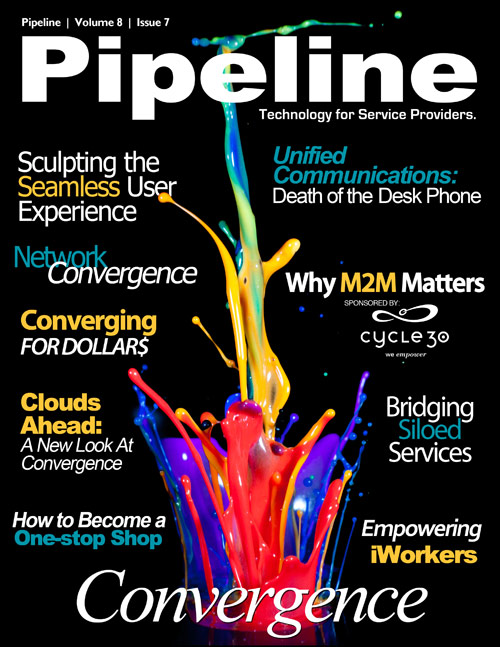There are numerous examples of next-gen application servers in the market from Ericsson, Alcatel-Lucent, OmniVox, Genband, OpenCloud (a recipient of significant funding from NSN), and others. They promise to accelerate the creation and delivery of new services, improve partner service enablement, provide a conduit for multi-device/platform data analytics, and leverage pre-paid scenarios that require real-time charging. As you can see in this vendor example in Figure 2, a next-gen application server is a critical link in the seamless user experience.

And it's not just consumer-market offerings that benefit from the next generation application server, it enables advanced enterprise service convergence as well. In Canada, Telus deployed the Genband's A2 Converged Application Server earlier this year, specifically for business customers. This single deployment enabled fixed/mobile convergence, unified communications, web-portal self management, integrated multimedia collaborations, and a PC-based soft client and call control capability.
Join Hands to Smooth Seams
As we all know, service providers' coverage maps include coverage provided by numerous partner networks. Since visual footprints are such a key component of marketing, this is one area where service providers have been quite active. However, the opportunity to leverage partnerships to deliver a seamless user experience extends far beyond roaming agreements.
Sometimes this means joining up with a partner to deliver the full gamut of access and service. Vodaphone recently partnered with Kordia to provide mobile voice and broadband (Vodaphone) along with fixed internet, WAN, and fixed-lined telephony (Kordia) in New Zealand.
Other times, it means linking in order to reach into areas where a carrier doesn't have spectrum licenses, or can't offer high-speed access. In India, Airtel, Idea, and Vodaphone entered into an agreement to, "provide 3G services to our customers in the circles where we have not built our own 3G network, in order to bring a pan-India experience of 3G services to our customers."
Swisscom and Verizon Business partnered in order to target seamless service convergence specifically for business customers. The resultant offering includes, "integrated networks, convergent services, seamless processes and comprehensive customer services."
AT&T has made partnering part of its DNA, since global, ubiquitous connectivity is one of the company's goals. AT&T underlines this in their marketing, explaining they offer, "the largest alliance of international voice and data network partners of any U.S. Carrier."
Partnering doesn't mean handing over network control to an outside operator. What it does mean is striking agreements to share unique services and network quality data.. It means entering into revenue sharing partnerships with OTT and other carriers to ensure quality across unmanaged networks. While there have been significant developments in access partnerships and high-end converged business service offerings, there is still much work to be done on the consumer level. Additionally, service partnerships—wherein carriers partner with other service provides (operators or OTT) to offer improved QoE services at a premium—are just beginning to take off.








